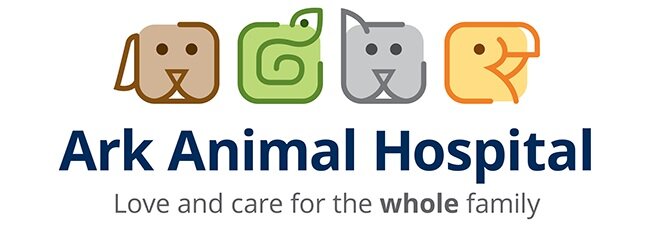Baby raccoons, skunks, foxes and groundhogs are rabies vector species. If you find one alone, you should not touch it until you call us (267) 416-9453. We can usually help these animals, but transportation instructions are involved and complex. We’ll be happy to talk you through it.
Living With Our Wild Neighbors
As a part of our jobs at the Philadelphia Metro Wildlife Center we answer many phone calls each day about a variety of wildlife issues. Often it is because a person has found an injured or orphaned animal and they want to know the next steps, but sometimes the caller is simply concerned about an animal’s presence in their home, yard, or neighborhood.
They ask things like:
“This animal is in my neighborhood–shouldn’t it be in the woods?”
“This animal is out during the day/ during winter, shouldn’t it be out at night/hibernating? Is there something wrong with it?”
“There’s an animal in my yard, will it eat my pet, harm my child, spread rabies?”
“Can I remove this animal and release it somewhere else, can you do it for me?”
All of these are valid questions, especially if you aren’t familiar with the natural behaviors of some of our wild neighbors! Our mission is not only to rehabilitate, but to help educate as well. Here are a few short posts addressing these most common questions and concerns from the public!
PART ONE:
Why do we see certain animals in our neighborhood?
Of course there are some species that we expect to see around our homes even if we live in densely populated areas– songbirds and squirrels are typically common and welcomed in most places.
But what about some of the other species such as foxes, raccoons, and opossums? Philly Metro Wildlife gets A LOT of calls about these species in particular. Is it normal for these species to be in our neighborhoods? What will happen if they are?
Unfortunately, the creation of our neighborhoods destroys wildlife habitats, and foxes, raccoons, and opossums have become very skilled at meeting their needs in developed areas. They are here because they are able to find their food, water, shelter, and space that they need to survive and thrive. So, it is NOT unusual for them to be sharing our neighborhoods with us. They also play a vital role in the urban/suburban ecosystem by keeping the populations of other species (rodents, insects, and the like) in check.
Most importantly, they will naturally avoid humans. Most of the time you see these animals, they are probably moving about with intention– going from one place to another, finding food, or caring for young. If you don’t bother them, they most likely won’t bother you., and they really just want to be left alone.
That said, you may or may not want to attract these species to your yard, and that’s fine. There are precautions you can take to discourage wildlife from taking up residence if that’s your concern:
Keep your trash inside or in a garage until pick-up day, tightly secure lids, and avoid leaving bagged trash outside.
Feed all pets inside. If you must feed pets outside, do so at a set time daily and immediately remove the food and clean up all mess, do not leave food out overnight. Tightly secure any food stored outside.
Keep the area under bird feeders clean and use feeders that collect fallen seed. Consider not filling feeders April through November when other food is plentiful so as not to attract unwanted animals, and bring feeders in at nighttime.
PART TWO:
Now that we know that it is normal to see wildlife such as foxes, raccoons, and opossums in our neighborhoods, what do we do when we see them during the day?
Foxes, raccoons, and opossums are considered nocturnal and will mostly be active at night. Being mostly active at night does not mean that you will never see them during the day, and seeing such an animal when the sun is out does not mean that there is something wrong with that animal.
These species will sometimes move about during the day to eat or drink or reclocate. This is especially true during “baby season” when parents are working hard to meet the caloric needs for themselves and their young. We often tell people in the springtime that it’s “BABIES, NOT RABIES” that is the cause for the increased daytime activity of these typically nighttime friends!
When you see these mostly nocturnal animals out during the day, take a moment to observe and enjoy them from a distance! Again, they want to be left alone, so observe from afar and never try to corner an animal–they will quickly be on their way.
Of course, there will be cases where an animal could be exhibiting unnatural behaviors such as spinning in circles or appearing overly agitated. Keep your distance and call us (267) 416-9453 (or your local wildlife agency) for specific advice!
During the winter months some animals hibernate (like woodchucks), others significantly reduce their activity but still roam around (raccoons), and some remain completely active (foxes and opossums). Occasionally, animals who should be hibernating (such as bats) are found out during a warmer spell during winter, and sometimes the energy that this requires can put that animal at risk, so if you find an animal that you are concerned about you are always welcome to call us for specific advice!
PART THREE:
So now we know that it is normal to see a variety of wildlife around our urban and suburban neighborhoods, and that these animals typically pose little to no threat to us if we leave them alone. Still, people often call to ask if the presence of these animals is harmful to their pets or children, and if there is an increased risk of disease (such as rabies).
As we’ve stated in the previous parts to this series, it’s important to leave animals alone, especially if they are with their young, and to teach our children to do the same.
Most of the time, predators will not take cats or small dogs if there is other food available. However, keeping pets indoors or on leash can ensure that you cat or dog will not happen upon a wild animal (this protects the wildlife AND your pet!).
Other animals that are housed outside, such as rabbits or chickens, should have proper housing that keeps the predators from entering from above, below, and from all places in between.
Wild animals do carry diseases that can be passed on to pets and humans. It’s important to keep your pet’s vaccinations up-to-date and to avoid handling wild animals (even injured and orphaned ones) without the proper protection.
In Pennsylvania we have six rabies vector species: raccoons, groundhogs, foxes, skunks, coyotes, and bats, and these animals should never be handled with bare hands (even the babies!). Avoiding contact is the way to protect yourself and your pets.
Diseases occur more in areas where the population of that species is unnaturally dense, which is another reason that we discourage feeding wild animals (intentionally, or unintentionally), so that populations are kept in a more natural balance.
PART FOUR:
Many animals have adapted so well to living around humans that they sometimes like to...move in! It’s not uncommon for people to find a family of opossums under their porch, or squirrels, bats, or raccoons taking up residence in their attic.
We get calls nearly every day about “nuisance animals”– meaning that they are not orphaned, sick, or injured, but are an inconvenience. Animals living in our attics and such can pose a health threat when there is build-up of feces or if an animal dies in a hard-to-reach spot. They can also chew through insulation and wiring, which can be a costly problem!
Wildlife rehabilitators do not remove nuisance animals, and animal control agencies will often only help remove an animal if it is in a common living space (like your living room or bedroom).
There are guidelines that you can follow to humanely exclude animals from your home with success. You can always call us and we are happy to give advice! Each situation is different and we can help you know when and how to remove an animal so that it doesn’t return to your home, and so that the animal (or family of animals) can still survive.
Trapping and relocating an animal can sometimes be a death sentence for that animal, and can even be illegal in some areas so please check your local municipal laws regarding this.
At the Philadelphia Metro Wildlife Center, we are committed to helping people protect their own interests, as well as the interests of the wildlife that share our space. We hope that the more people know about the wildlife that share our space and support the ecosystem, the greater the chance that we can all peacefully coexist with our “wild neighbors”.
There are some great resources for humane exclusion techniques, and the Humane Society of the United States is a great place to start!
https://www.humanesociety.org/resource/wildlife-management-solutions















